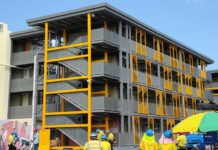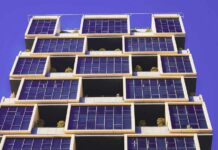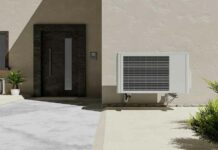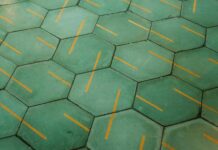Glass curtain walls have revolutionized modern architecture, blending aesthetics with functionality effortlessly. They flood interiors with natural light, create a sleek exterior, and contribute to energy efficiency. However, designing with glass curtain walls isn’t as simple as choosing a pretty façade—it requires careful planning, engineering, and a keen understanding of materials. Let’s explore the key considerations when working with glass curtain walls.
Structural Integrity and Load-Bearing Capacity
Unlike traditional walls, glass curtain walls are non-load bearing, meaning they don’t support the building’s weight. Instead, they act as protective skin attached to the structure, a key factor that glass curtain wall manufacturers take into account when designing efficient and durable systems. This makes it essential to consider:
- Wind loads – High-rise buildings face significant wind pressure. The curtain walls must be engineered to withstand these forces without excessive deflection.
- Seismic activity – In earthquake-prone areas, the design must accommodate movement and prevent glass breakage.
- Dead load vs. live load – While curtain walls don’t carry floor loads, they must support their own weight and resist environmental forces.
Thermal Performance and Energy Efficiency
Glass is beautiful but can be a major heat loss or gain source if not designed properly. To ensure energy efficiency:
- Double or triple glazing helps improve insulation and reduces energy consumption.
- Low-E (low emissivity) coatings minimize heat transfer, allowing light to pass through.
- Thermal breaks in aluminum frames reduce heat conduction and prevent condensation issues.
- Smart glass technology can adjust transparency levels based on sunlight, reducing cooling costs.
Acoustic Performance and Sound Insulation
Glass may look elegant, but poor sound insulation can lead to an uncomfortable indoor environment, especially in busy urban settings. You can laminate glass with acoustic interlayers to enhance acoustic performance, which helps block noise. Insulated glazing units (IGUs) can also help here as they reduce external sounds. On top of that, try sealing and proper gaskets to prevent noise leakage through gaps in the system.
Water and Air Infiltration Control
One of the biggest challenges with glass curtain walls is preventing water leaks and air infiltration. Improper installation or design flaws can lead to moisture issues, mold growth, and energy inefficiency. Key considerations include:
- Proper drainage systems to channel rainwater away.
- Continuous air barriers to prevent drafts and moisture infiltration.
- Pressure-equalized systems that minimize wind-driven rain penetration.
Aesthetic Versatility and Customization
One of the biggest appeals of glass curtain walls is their ability to create stunning visual effects. Be it a sleek corporate tower or a dynamic, curved facade, customization options include:
- Tinted, frosted, or patterned glass for a unique aesthetic.
- Spandrel panels to conceal floor slabs while maintaining a seamless look.
- Frameless or structural glazing systems for an ultra-modern appearance.
- Custom shapes and sizes to push architectural boundaries.
Fire Safety and Compliance
Glass and fire safety don’t always go hand in hand, but with the right approach, glass curtain walls can meet fire codes without compromising aesthetics. Key factors to consider:
- Fire-rated glazing options can delay the spread of flames.
- Intumescent coatings expand under heat, blocking fire pathways.
- Compartmentalization strategies prevent fire from spreading across floors through the curtain wall system.
Maintenance and Durability
Glass curtain walls require regular upkeep to maintain their appearance and performance. Considerations for durability and maintenance include:
- Self-cleaning coatings reduce dirt buildup and water spots.
- The easy-access design ensures safe maintenance for cleaning crews.
- Use of high-quality sealants and gaskets to extend lifespan.
- Corrosion-resistant framing materials are suitable for longevity, especially in coastal areas.
Sustainability and Environmental Impact
Sustainability is a major focus in modern construction, and glass curtain walls can be designed to be eco-friendly. Green design considerations include:
- Recyclable materials such as aluminum frames and glass.
- Solar control glass to minimize reliance on artificial cooling.
- Integration with renewable energy sources, such as solar panels within the glass.
- LEED or Leadership in Energy and Environmental Design certification compliance to enhance the building’s sustainability rating.
Final Thoughts
Designing with glass curtain walls is both an art and a science. While they offer unmatched aesthetics and functionality, every detail—from structural integrity to energy efficiency—must be well-planned. Considering factors like thermal performance, acoustic insulation, and fire safety helps architects and designers create breathtaking, high-performance buildings that stand the test of time.




























